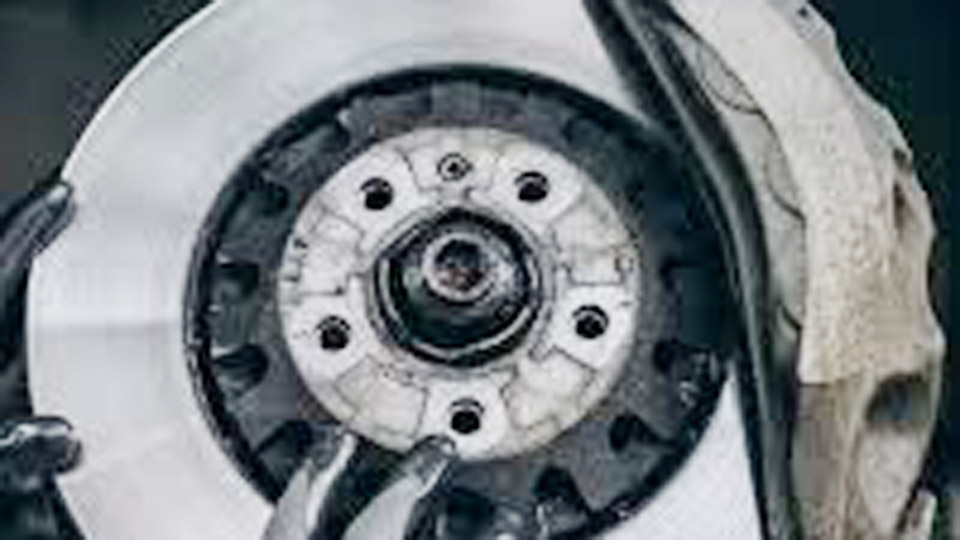How to Improve Your Car Brakes?
I’ve been driving for years, and nothing gives me more peace of mind than knowing my car’s brakes are in top shape. There’s something reassuring about pressing the pedal and feeling the car stop smoothly, no matter the situation. But brakes don’t just stay perfect on their own—they need care and sometimes a little upgrade. If you’re wondering how to improve your car brakes, you’re in the right place.
I’ve spent time tinkering with my own cars, talking to mechanics, and learning what makes brakes perform better. I’ll share everything I’ve discovered, from simple maintenance to high-performance upgrades. It’s like we’re sitting in my garage, chatting about how to make your stops safer and stronger. Let’s dive in and give your brakes the boost they deserve!

Image by madloba
Why Improving Your Car Brakes Matters
I used to think brakes were just “good enough” as long as they stopped the car. But after a close call on a rainy day, I realized better brakes could save my life. Improving your brakes isn’t just about performance—it’s about safety, confidence, and control.
Good brakes mean shorter stopping distances. This is huge when a deer darts across the road or traffic slams to a halt. I’ve also noticed that better brakes feel more responsive, making driving less stressful. Whether I’m cruising in the city or tackling winding mountain roads, upgraded brakes give me peace of mind.
Improving brakes can save money in the long run. Well-maintained or upgraded brakes last longer and prevent damage to other parts, like rotors. It’s a win-win: safer drives and fewer trips to the shop. Let’s talk about how I keep my brakes performing at their best.
Regular Brake Maintenance
I’ve learned that the foundation of great brakes is regular care. Skipping maintenance is like ignoring a toothache—it only gets worse. Here’s how I keep my brakes in top condition.
Check Brake Fluid
Brake fluid is the lifeblood of hydraulic brakes. I check the fluid level every few months. It’s in a clear reservoir under the hood, marked with “min” and “max” lines. If it’s low, I top it off with the type recommended in my car’s manual. Old or contaminated fluid can make brakes spongy, so I flush and replace it every two years. This keeps the pedal firm and responsive.
Inspect Brake Pads
Brake pads wear down over time. I check them every 6 months or when I rotate my tires. If they’re less than a quarter-inch thick, I replace them. Worn pads reduce stopping power and can damage rotors, which costs more to fix. I’ve replaced pads myself—it’s not too hard with basic tools.
Look at Rotors
Rotors are the metal discs the pads grip to stop the car. I inspect them for grooves, warping, or rust. If they’re damaged, I have them resurfaced or replaced. Smooth rotors mean better braking and less vibration. I learned this after feeling my pedal pulse during stops—a warped rotor was the culprit.
Clean and Lubricate
Dirt and rust can make brakes less effective. I clean the rotors with a wire brush and brake cleaner every few months. I also lubricate the caliper pins and the back of the pads with high-temperature brake grease. This prevents sticking and ensures smooth operation. I once skipped this and heard squeaking—lesson learned.
Upgrading Brake Pads
One of the easiest ways I’ve improved my brakes is by upgrading the brake pads. The stock pads on my car were fine, but better pads made a huge difference.
Types of Brake Pads
I’ve tried different pad materials, and each has its perks. Ceramic pads are my favorite for daily driving. They’re quiet, produce less dust, and last long. Semi-metallic pads are great for performance driving or heavy vehicles—they’re durable but can be noisy. Organic pads are softer and quieter but wear out faster. I check my car’s manual to see what’s recommended.
Choosing the Right Pads
When I upgraded, I thought about my driving style. I mostly drive in the city, so ceramic pads work well for me. If I towed a trailer or hit the track, I’d go with semi-metallic. I also pick reputable brands—cheap pads wear out fast and can squeak. Spending a bit more saved me headaches later.
Installation Tips
I’ve replaced pads myself a few times. I jack up the car, secure it with jack stands, and remove the wheel. Then, I unbolt the caliper, slide out the old pads, and pop in the new ones. I make sure to lubricate the caliper pins and pad backs. If you’re not handy, a mechanic can do this in an hour for $100-$200.
Installing Performance Rotors
After upgrading my pads, I looked into performance rotors. Stock rotors are fine, but better ones improve stopping power and look cool too.
Slotted Rotors
Slotted rotors have grooves that help clear gas and debris from the pads. I noticed better grip, especially in wet conditions. They’re great for spirited driving but can wear pads faster. I use them on my weekend car.
Drilled Rotors
Drilled rotors have holes to vent heat and gas. They stay cooler during hard braking, which prevents fade. I tried these, but they’re prone to cracking if you brake aggressively. They’re best for moderate performance driving.
Combining Both
Some rotors are slotted and drilled. I’ve seen these on sports cars. They offer great performance but need careful maintenance. For my daily driver, I stick with slotted rotors—they’re a good balance.
Installation
Swapping rotors is trickier than pads. I remove the wheel and caliper, then unbolt the rotor. New rotors need to be clean, so I wipe them with brake cleaner. I’ve done this myself, but it takes a few hours. A shop charges $200-$400, depending on the car.
Upgrading Brake Calipers
I once drove a friend’s car with upgraded calipers, and the brakes felt like they could stop a train. Calipers house the pads and pistons, and better ones improve performance.
Benefits of Big Brake Kits
Big brake kits include larger calipers and rotors. They offer more clamping force and better heat resistance. I’ve noticed shorter stopping distances and less fade during hard driving. They also look awesome through the wheels.
Choosing a Kit
I research kits that fit my car’s make and model. Reputable brands ensure quality and compatibility. I also check if the kit needs new wheels—bigger calipers might not fit under stock rims. My friend spent $2,000 on a kit, but budget options start at $500.
Installation
Installing a big brake kit is a big job. I’d leave it to a pro unless you’re an experienced mechanic. It involves replacing calipers, rotors, and sometimes brake lines. A shop might charge $500-$1,000 for labor, but it’s worth it for safety.
Switching to Stainless Steel Brake Lines
I didn’t think brake lines mattered much until I tried stainless steel ones. They made my brake pedal feel rock-solid.
Why They Help
Stock brake lines are often rubber, which can flex under pressure. Stainless steel lines don’t, so the pedal feels firmer. I noticed quicker response, especially during hard stops. They also last longer and resist damage.
Installation
I had a shop install stainless steel lines for about $300. It involves draining the old fluid, swapping the lines, and bleeding the system to remove air. I wouldn’t try this myself—leaks are dangerous. But the upgrade was worth every penny.
Maintenance
Stainless lines need less care than rubber ones, but I still check for damage during inspections. I also flush the brake fluid regularly to keep the system clean.
Improving Brake Fluid Quality
Brake fluid might seem boring, but upgrading it improved my brakes more than I expected. Higher-quality fluid handles heat better, which is key for performance.
Types of Brake Fluid
Most cars use DOT 3 or DOT 4 fluid. I upgraded to DOT 4 for its higher boiling point—it resists turning to vapor during hard braking. For track cars, DOT 5.1 or racing fluids work even better. I check my manual to avoid mixing types—DOT 5 is different and not compatible.
Flushing the System
I flush my brake fluid every two years. Old fluid absorbs water, which lowers its boiling point and can cause corrosion. A shop charges $80-$150, or I do it myself with a friend. We pump fresh fluid through until it runs clear.
Checking Levels
I keep an eye on the fluid level monthly. If it’s low, I top it off and check for leaks. A sudden drop means trouble, so I get it inspected right away.
Adding a Brake Booster
Some older cars, like my dad’s classic truck, have weak brakes. A brake booster made a big difference.
What It Does
A brake booster uses engine vacuum to amplify pedal force. It makes braking easier, especially in heavy vehicles. My dad’s truck stopped better without him pressing as hard.
Installation
Adding a booster is complex. It involves mounting the booster, connecting it to the master cylinder, and hooking up vacuum lines. I’d let a pro handle it—costs range from $300-$800, depending on the car.
Maintenance
I check the booster’s vacuum hose for cracks during inspections. A failing booster makes the pedal hard, so I watch for that.
Driving Habits for Better Braking
I’ve found that how I drive affects my brakes as much as upgrades. Good habits keep them performing well.
Avoid Hard Braking
Slamming the brakes overheats pads and rotors, causing wear. I brake gently when possible, especially downhill. It’s easier on the brakes and saves gas.
Anticipate Stops
I look ahead to spot traffic slowing down. This lets me ease off the gas early and brake lightly. It’s smoother and extends brake life.
Use Engine Braking
In my manual car, I downshift to slow down sometimes. This uses the engine to reduce speed, giving the brakes a break. It’s great on long descents.
Warm Up Brakes
In cold weather, I brake gently for the first few stops. This warms the pads and rotors, improving grip. It’s a small trick that works.
When to Call a Professional
I love DIY, but some brake jobs are best left to experts. Here’s when I take my car to a shop.
Complex Upgrades
Big brake kits or stainless lines need precision. I’d rather pay a pro than risk a mistake. Shops have the tools and know-how to do it right.
Strange Symptoms
If my brakes feel spongy, vibrate, or pull to one side, I get them checked. It could be air in the lines, a stuck caliper, or warped rotors. A mechanic diagnoses it fast.
Safety First
Brakes are critical for safety. If I’m unsure about a repair, I don’t take chances. A shop visit costs less than an accident.
Choosing Quality Parts
I’ve learned that quality matters when upgrading brakes. Cheap parts wear out fast and can fail.
Reputable Brands
I stick to trusted brands like Brembo, EBC, or Akebono. They cost more but perform better and last longer. I read reviews and ask mechanics for recommendations.
OEM vs. Aftermarket
OEM (original equipment manufacturer) parts match the car’s specs. Aftermarket parts can be better for performance but need research. I use OEM for my daily driver and aftermarket for my weekend car.
Warranty
I look for parts with a warranty. It’s a sign of quality and protects me if something fails. Most good brands offer at least a year.
Here’s a table summarizing upgrade options:
| Upgrade | Benefits | Cost (Parts + Labor) | Best For |
|---|---|---|---|
| Performance Brake Pads | Better grip, less dust | $50-$300 | All drivers |
| Slotted/Drilled Rotors | Improved grip, heat dissipation | $200-$600 | Performance driving |
| Big Brake Kit | Shorter stops, less fade | $500-$3,000 | Track or heavy vehicles |
| Stainless Steel Lines | Firmer pedal, durability | $200-$500 | Enthusiasts |
| High-Performance Fluid | Resists heat, better response | $20-$150 | Hard driving or track |
| Brake Booster | Easier braking | $300-$800 | Older or heavy vehicles |
Testing Your Upgraded Brakes
After upgrading, I always test my brakes to make sure they’re working right. Here’s how I do it.
Low-Speed Tests
I start in a quiet lot, braking gently from 10-20 mph. I check for noise, vibration, or pulling. This beds in new pads and confirms everything’s smooth.
Highway Tests
Once I’m confident, I test at higher speeds on a clear road. I brake from 60 mph to feel the response. I make sure the pedal is firm and stops are even.
Emergency Stops
In a safe area, I simulate a hard stop. This tests the brakes’ grip and ABS (if equipped). I did this after installing slotted rotors and felt the difference.
Long-Term Check
I monitor performance over weeks. If I hear squeaking or feel changes, I inspect the brakes. New parts sometimes need a break-in period.
Conclusion: Stronger Brakes, Safer Drives
Improving my car’s brakes has been one of the best things I’ve done for my driving experience. From simple maintenance like checking fluid to big upgrades like performance rotors, every step makes my stops smoother and safer. I love the confidence of knowing my car can handle whatever the road throws at me. Whether you’re a daily commuter or a weekend racer, better brakes are worth the effort.
Take a moment to check your brakes or plan an upgrade. A little work now can make a huge difference later. I hope my tips help you get the most out of your car’s stopping power. Now, go hit the road with confidence—your brakes have got your back!
FAQs
How often should I check my brake pads?
I check mine every 6 months or during tire rotations. If they’re less than a quarter-inch thick, replace them to keep braking strong.
Are ceramic brake pads worth the cost?
Yes, for daily driving. They’re quiet, last long, and keep wheels cleaner. I use them and love the smooth stops.
Can I install performance rotors myself?
If you’re handy, yes. It takes a few hours and basic tools. But if you’re unsure, a shop can do it for $200-$400.
Will stainless steel brake lines make a big difference?
They make the pedal firmer and more responsive. I noticed quicker stops after installing them. They’re great for enthusiasts.
How do I know if my brake fluid needs replacing?
Flush it every two years or if it looks dark or murky. Old fluid can make brakes weak, so I keep mine fresh.

David Peterson, the chief editor of sparepartscare. I am an automobile engineer and assign to an local firm with much experience in automobile equipment. During the time, most of my experience is related to the Industry of cars parts. I learned about the thing, when working with experienced inspectors, one must be as good as the inspector, or better, with knowledge of the project as well as the practical aspects of automobile industry.













